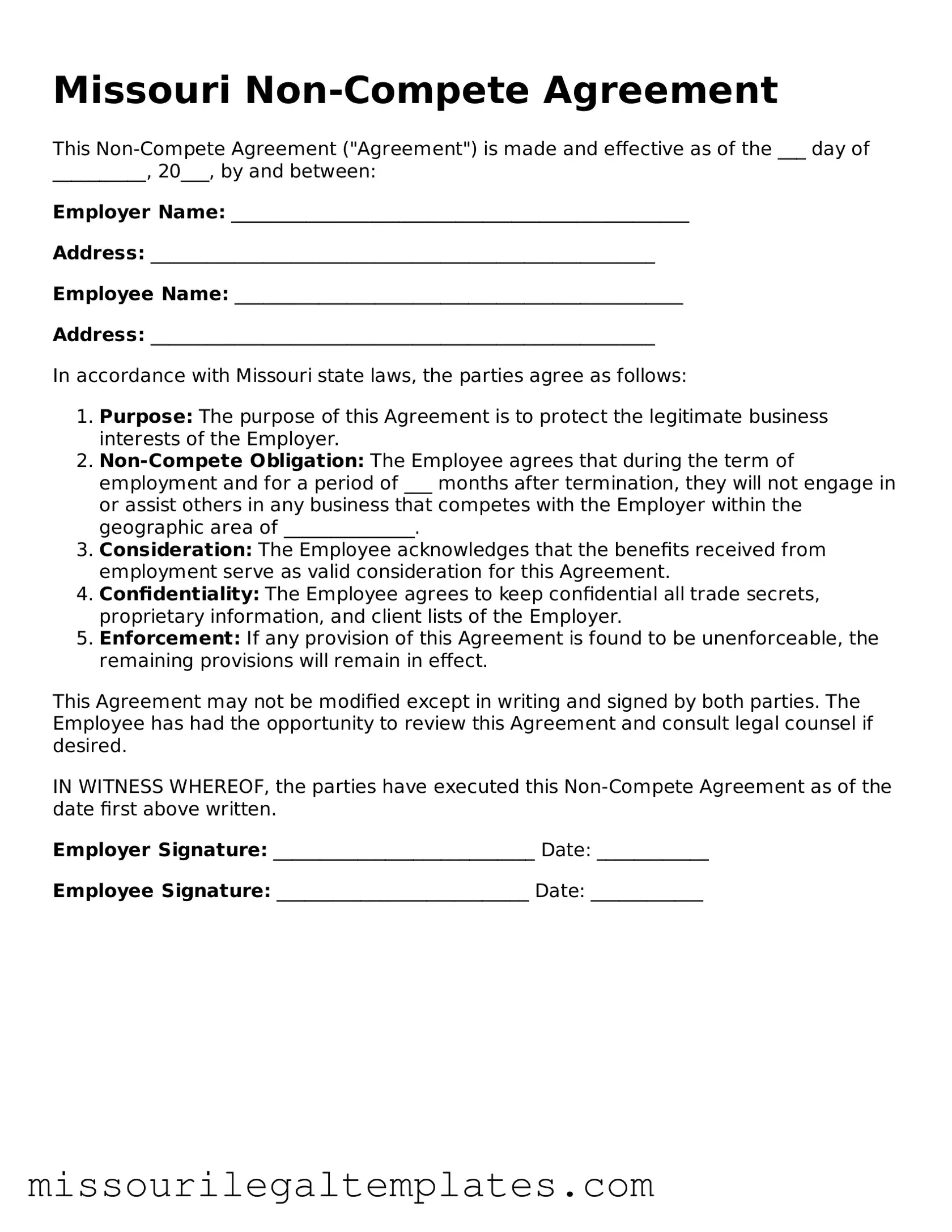Missouri Non-Compete Agreement
This Non-Compete Agreement ("Agreement") is made and effective as of the ___ day of __________, 20___, by and between:
Employer Name: _________________________________________________
Address: ______________________________________________________
Employee Name: ________________________________________________
Address: ______________________________________________________
In accordance with Missouri state laws, the parties agree as follows:
- Purpose: The purpose of this Agreement is to protect the legitimate business interests of the Employer.
- Non-Compete Obligation: The Employee agrees that during the term of employment and for a period of ___ months after termination, they will not engage in or assist others in any business that competes with the Employer within the geographic area of ______________.
- Consideration: The Employee acknowledges that the benefits received from employment serve as valid consideration for this Agreement.
- Confidentiality: The Employee agrees to keep confidential all trade secrets, proprietary information, and client lists of the Employer.
- Enforcement: If any provision of this Agreement is found to be unenforceable, the remaining provisions will remain in effect.
This Agreement may not be modified except in writing and signed by both parties. The Employee has had the opportunity to review this Agreement and consult legal counsel if desired.
IN WITNESS WHEREOF, the parties have executed this Non-Compete Agreement as of the date first above written.
Employer Signature: ____________________________ Date: ____________
Employee Signature: ___________________________ Date: ____________
